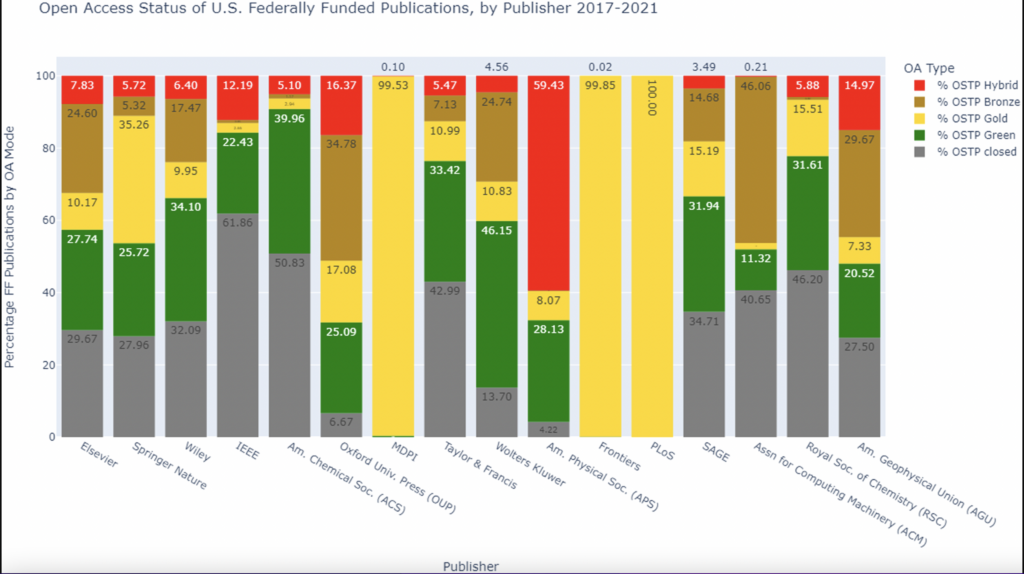In a recent paper, Impact of the 2022 OSTP memo: A bibliometric analysis of US federally funded publications, 2017–2021 published in the Quantitative Science Studies journal, researchers analyzed data obtained from the Dimensions database and carried out a detailed study of the impact of the 2022 Office of Science and Technology Policy (OSTP) memo. The study aimed to thoroughly “investigate the characteristics of U.S. federally funded research over a 5-year period from 2017–2021 to better understand the updated guidance’s impact.”
The researchers used a manually created custom filter in the Dimensions database to zero down on publications that arose from U.S. federal funding. Of the resulting average of 265,000 articles published each year (from 2017–2021) acknowledging US federal funding agencies, the team went on to further examine the outputs by publisher, journal title, institutions, and Open Access status.

The seven research questions presented in the study serve as excellent illustrations of the types of inquiries that can be effectively addressed using the Dimensions database.
- How many U.S. federally funded publications have there been over the past 5 years? What are the yearly totals, and what proportion do these represent of worldwide and U.S.-specific output?
- Which U.S. federal funding agencies awarded these grants?
- How do the number of federally funded articles vary by research category/discipline?
- Which publishers tend to publish federally funded articles?
- Which journals tend to publish federally funded articles?
- Which research institutions are authors who tend to publish federally funded articles affiliated with?
- In what manner were these federally funded articles published? Were they published openly or behind a paywall?
The researchers conclude that although their analysis went further than the OSTP companion impact report, is only a first step in attempting to understand the broad-reaching implications of the OSTP memo and its policies. “It is clear that publishers, journals, and research institutions will all be affected, with some needing to adjust more than others,” they write. The researchers also state that while the real-world consequences of the guidance provided by the memo are still being understood, it is clear that publishers, authors, institutions and readers will have to change old information consumption (and dissemination) patterns. It is certain that peer-reviewed publications becoming immediately accessible to the public will result in greater impact and reach. But, it is unclear if there will there be unintended consequences and so carrying out further analyses is important. “Dimensions and other bibliographic metadata tools will continue to define and refine funder filters to enable users to conduct a similar analysis to this on their own institution’s publications.”
